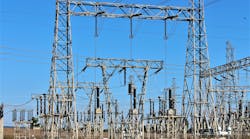Digital grid is becoming a primary focus area for the global power and utilities sector, with 92% of companies surveyed planning to invest in the next 12 months, according to a new EY report, Digital grid: powering the future of utilities. In the next five to seven years, investment in digital grid is expected to be in the region of US$500b.
Forty-six percent of respondents confirmed that digital grid – the digitization of electricity, gas and water networks – is a top strategic program or a target for investment over the next year. Growth in renewables (72%), improvement in infrastructure operations and performance (72%) and cybersecurity risks (60%) were cited as the primary drivers for investment in this area.
Paul Micallef, EY Global Power & Utilities, Digital Grid Leader, said: "Today's power-hungry world demands more resilience and flexibility from the grid. Digital grid will serve as the backbone for smarter, more reliable future energy systems – and that fact is not lost on utilities. The acceleration of renewables, connected homes and devices, competition from new entrants and other disruptive forces are compelling utilities to prioritize digital grid. And we're seeing that reflected in large-scale, widespread investment programs."
Utilities cite three primary barriers to digital grid adoption
An equal number of survey respondents (48%) identified difficulty making a business case, immature technologies and supplier inexperience, and a lack of understanding of the implications as the top barriers to digital grid adoption.
Micallef says: "These barriers are not unexpected given the rate of change in the utilities sector, the level of disruptive innovation and pressure on the international supply chain to keep up and service global concurrent demand."
Non-traditional utility entrants increase pressure to adopt digital grid
Fifty-six percent of respondents agree that non-traditional utility entrants will completely transform the sector. These new competitors – from telecommunication and technology companies to energy aggregators and energy service companies – are investing in offerings that have the potential to erode traditional utilities' returns on digital grid investment. This includes connected home products, home energy management solutions and off-grid solutions among other products.
Micallef said: "Competition from new entrants is proving particularly disruptive to utilities, which are traditionally averse to risk and encumbered by regulation. Our survey results indicate that digital grids may be falling victim to this disruption, with 24% of utilities citing competition from non-utility entrants as a top three risk. While it is clear that utilities are feeling the pressure, some are grabbing the bull by the horns and investing in innovative solutions to meet changing customer expectations, drive growth and move toward the digital grid era."
The report highlights innovative approaches undertaken by utilities to manage disruption from new entrants, including developing a virtual power plant based on battery storage, promoting a "bring your own battery" business model and testing blockchain for electric vehicle charging.
Micallef said: "The utility of the future will need to operate in a new value chain, augmented and interconnected by digital technologies, where power and information flows in both directions. Digital grid is crucial to achieving this future state but, in a sector that is still struggling to define exactly what a digital grid is, there is a long journey ahead to unlock its full value. Utilities can lay the foundation for value creation by defining clear objectives and identifying the true scope of the business change required to make digital grid a reality."
Digital grid is the digitization of electricity, gas and water networks using advanced technology. It allows two-way communication between the utility and the network, including its customers, and enables insight, automation and control across the utilities operations, empowering utilities to improve reliability, availability and efficiency of the grid.
To identify the current state of digital grid, EY commissioned research based on telephone interviews in September 2016 with 50 utilities with large distribution networks. The 50 respondents were either stand-alone distribution system operators or part of a vertically integrated utility.
Geographically, 52% of respondents were based in Europe, 20% in the Americas, 10% in the Asia-Pacific region, and 18% in the Middle East and Africa. In terms of size, 66% of utilities surveyed had more than 500,000 customers.
Of those interviewed, 12% were from the C-suite; the remainder were digital grid leaders in operational or management positions.


